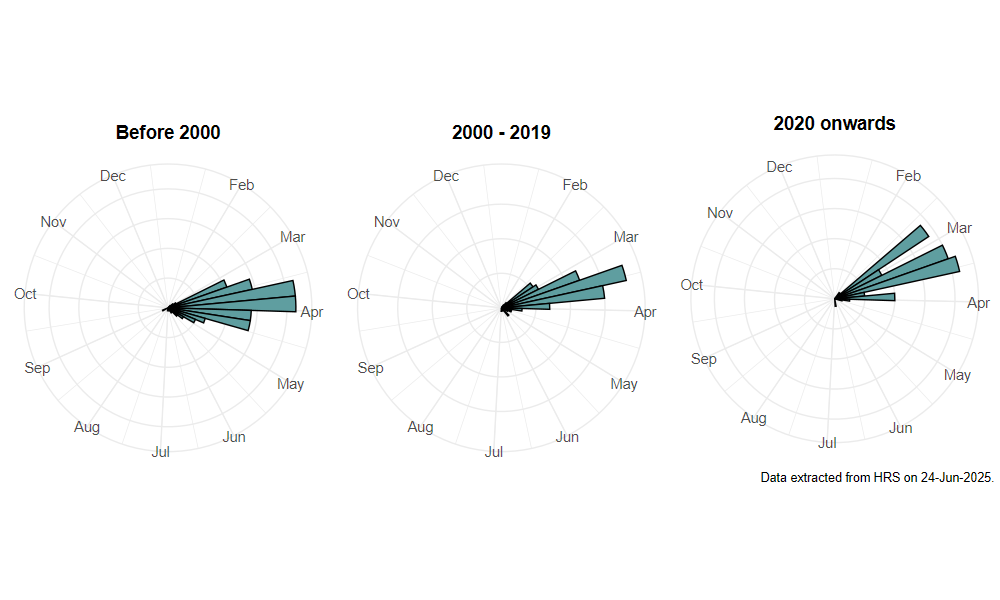Melangyna quadrimaculata (Verrall, 1873)
Identification
Identification difficulty = 3. ![]()
![]() according to Ball & Morris, 20241
according to Ball & Morris, 20241
Synonymy
Syrphus quadrimaculatus Verrall in Coe(1953)2.
Biology
The larva is aphidophagous, and appear to have a clear preference for adelgids on Firs Abies sp. This is a woodland species. Adults are active very early in the spring when they usually visit flowering trees such as sallows Salix sp. and Hazel Corylus avellana catkins in clearings and rides. It flies relatively high in the canopy and is most readily caught using a net with a telescopic handle.
Flight period
The following plots show the number of unique records per week excluding those reported to be of immature stages.

Distribution
There are scattered records throughout mainland Britain but there are localised concentrations that probably indicate local recorder effort. This species is probably much more widely distributed than records suggest because it flies very early in the spring.

Trends
The following plots show the Frescalo TFactor vs year and a map of the rescaled frequency (all records) for the species.